#Broadband Equipment
Text
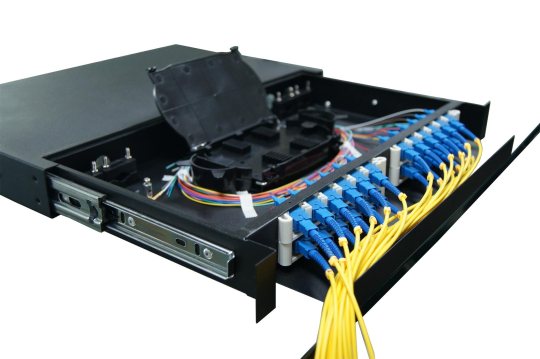


Slidable Rack-mount Fiber Optic Distribution Frame ODF-RS24-A45 has aluminum sliding fittings with self-locking functions prevent the drawer from falling when moved; The drawer is the holding board for splicing, easy to withdraw the fibers when testing and distributing.
24~48 fibers 1U 48231745.5 4.2kg
v Material:Cold-roll steel
v Standard size, light weight and reasonable structure
v Slide out drawer for easy cable management and operation.
v Suitable for ribbon and single fiber
v Front plastic adapter plate suitable FC,SC,ST,LC,… adapters.
Welcome to inquire
1 note
·
View note
Text
Why Cisco's Earnings Are Causing Networking Stocks Juniper and Broadcom to Sink
Why Cisco’s Earnings Are Causing Networking Stocks Juniper and Broadcom to Sink
Text size
A weak sales forecast from Cisco sends shares of other networking companies tumbling.
Justin Sullivan/Getty Images
Shares of
Cisco Systems
were sharply lower Thursday after the networking gear maker issued a weak sales forecast for its current quarter. The warning sent stocks of other networking companies tumbling.
Cisco (ticker: CSCO) said it expects fiscal fourth-quarter revenue…
View On WordPress
#ANET#Arista Networks#AVGO#Broadband Equipment#Broadcom#C&E Industry News Filter#China#CIEN#Ciena#Cisco Systems#computers#Computers/Consumer Electronics#consumer electronics#Content Types#corporate#Corporate/Industrial News#CSCO#Earnings#Factiva Filters#Financial Performance#Industrial Electronics#Industrial Goods#industrial news#JNPR#Juniper Networks#lan#LAN/WAN Hardware#Markets#Networking#North America
0 notes
Text
Counting the Costs: Typical Expenses Required to Build a WISP

Introduction
Wireless Internet Service Providers (WISPs) have been making waves in the world of telecommunications, offering high-speed internet access to underserved areas and niche markets. Building a WISP is an exciting venture that can be both financially rewarding and provide a valuable service to communities in need. However, like any business, starting a WISP comes with its fair share of expenses. In this blog post, we’ll break down the typical expenses required to build a WISP and help you understand the financial commitment involved.
1. Infrastructure Costs
Towers: Towers are the backbone of your WISP’s network. You may need to build or lease them, and this can be one of the most substantial expenses. The cost depends on the type of tower, location, and height. Building a new tower can cost anywhere from tens of thousands to millions of dollars. Leasing an existing tower can be more cost-effective but still requires ongoing lease payments.
Antennas and Radios: Antennas and radios are necessary for transmitting and receiving signals. The costs can vary significantly based on the technology you choose and the number of subscribers you plan to serve.
Satellite Dishes and Backhaul Equipment: If your WISP relies on satellite connections or point-to-point microwave links for backhaul, these equipment costs should be factored in. Satellite dishes and microwave radios can range from a few thousand dollars to tens of thousands.
2. Licensed and Unlicensed Spectrum Fees
Licensed Spectrum: If you plan to operate in licensed frequency bands, you’ll need to pay licensing fees to the appropriate regulatory authority. These fees vary widely and can be annual or one-time payments. They are essential for securing the spectrum you need for your service.
Unlicensed Spectrum: Utilizing unlicensed spectrum, such as the 2.4 GHz or 5 GHz bands, may not require licensing fees. However, you’ll need to be aware of spectrum congestion, interference, and compliance with regulations governing the use of unlicensed frequencies.
3. Network Equipment
Routers and Switches: Your WISP network will require routers and switches to manage data traffic efficiently. The costs depend on the size and complexity of your network.
Access Points: Access points are essential for providing wireless connectivity to customers. These come in various forms, from outdoor to indoor models, with differing costs.
4. Customer Premises Equipment (CPE)
Subscriber Modules: These devices are installed at the customer’s premises to receive and transmit signals. Costs can vary based on the technology and features you offer. For instance, Point-to-MultiPoint (PMP) CPEs tend to be more affordable compared to Point-to-Point (PTP) equipment.
Modems and Routers: You may provide or recommend specific modems and routers for your subscribers. These costs can be either included in your service fees or billed separately to your customers.
5. Licensing and Regulatory Fees
Permits and Licenses: To operate legally, you may need to obtain various permits and licenses, including zoning permits, tower permits, and local business licenses. The cost of these permits can vary based on your location and regulatory requirements.
Regulatory Compliance: Complying with local, state, and federal regulations can be an ongoing expense. It may involve filing reports, paying regulatory fees, and ensuring that your WISP operations meet all legal requirements.
6. Marketing and Advertising
Website Development: Building a professional website is essential for attracting customers. Costs can vary depending on the complexity and functionality of your site.
Social Media Campaigns: Running social media advertising campaigns and maintaining an active online presence is crucial for marketing your WISP. Budget for both content creation and advertising expenses.
Printed Materials: Brochures, flyers, and other printed materials are useful for local marketing efforts. Printing costs should be considered.
7. Staffing
Technical Staff: Employing technical staff for network maintenance, troubleshooting, and system optimization is essential for providing a reliable service.
Customer Support: Customer support representatives are vital for addressing subscriber issues, billing inquiries, and ensuring customer satisfaction.
8. Maintenance and Upkeep
Routine Inspections: Regular tower inspections, equipment maintenance, and software updates are necessary to keep your network running smoothly.
Upgrades: As technology advances, you may need to invest in equipment upgrades to maintain the quality and speed of your service.
9. Customer Support
Support Staff: Budget for customer support representatives, training, and resources to ensure your subscribers receive the assistance they need when issues arise.
10. Insurance and Contingency
Insurance: Insurance coverage protects your WISP from unexpected events like equipment damage, natural disasters, or legal liabilities. The cost of insurance depends on the coverage you choose.
Contingency Fund: It’s wise to set aside funds for unforeseen contingencies, such as emergency repairs or unexpected regulatory changes. Having a financial safety net is essential for the long-term stability of your WISP.
Conclusion
Building and operating a WISP is a significant financial commitment. It involves a combination of upfront infrastructure costs, ongoing operational expenses, and regulatory fees. To ensure the success of your WISP, careful planning and budgeting are essential. While the initial investment may be substantial, the potential for a profitable business and the opportunity to provide valuable internet services to underserved areas make it a worthwhile endeavor. By accounting for these expenses, you can build a successful WISP and contribute to bridging the digital divide in your community.
#WISP Infrastructure#Spectrum Management#Network Equipment Costs#Regulatory Compliance#Business Planning for WISPs#wisps#rural broadband#fixedwireless
0 notes
Link
https://www.imda.gov.sg/regulations-and-licensing-listing/dealer-and-equipment-registration-framework/compliance-to-imda-standards/broadband-access-services/broadband-qos-performance-for-q1-2022
We want to develop a vibrant industry where talents and innovation come together. The aim: Create new businesses and transform existing ones.
#Fibre Broadband QoS Performance for Q1 2022 - Infocomm Media Development Authority#https://www.imda.gov.sg/regulations-and-licensing-listing/dealer-and-equipment-registration-framework/compliance-to-imda-standards/broadband
0 notes
Photo

Humans are weird: Reckoning
Conquest log Archive 1731
Star Date 93745
Scouting detail 831 reports low level broadband communication signals while exploring sector G17. Signals are weak in nature but contain enough complex patterns to imply linguistics.
Requested additional teams and stronger receiver equipment was approved and further investigations begun.
Star date 93763
The unknown signals have increased in frequencies and scouting details have begun narrowing down origin location. With the stronger equipment the signals have been found to be visual transmissions rather than simple audio only communications.
First visuals of the aliens sending the messages have them appearing as bipedal creatures standing upright with two arms and legs. Despite sharing the same form many of them appear to hold individual distinctive features ranging from hair color, skin color, height, tone of voice, body proportions, etc.
The linguistics corps is attempting to create a foundation for understanding their primitive language but Warlord Xulien has instead diverted manpower to analyzing their current technological level. He has taken interest in the signals; though he appears less interested in the species themselves and is more invested in the world they occupy.
What little he has seen of the planet through the transmissions has convinced him that it would be the next prime candidate for the colonization corp and would become the new frontier outpost for his forces to base in for their westward expansion.
Star Date 93771
With the combined efforts of the increased scouting details the alien’s believed homeworld has been located; a medium sized binary star cluster with five orbital masses circling the twin suns. Four of the planetoids have their orbital curves sending them too close to the suns to be bathed in lethal radiation or too far and ending up as a frozen orb. The fifth planet finds itself in perfect synchronization with the two suns and found itself in the so called “Green Zone” orbit that can sustain life.
Scouting detail 831 received the honor of sending the first ship into the system. Primary focus was altered at the command of Warlord Xulien to focus on military capabilities present in the system.
First visuals were reported back and found to be unimpressive.
The species, while having advanced far enough to obtain space flight, showed limited space presence aside from an array of artificial satellites and small mining craft that were sent to the four desolate planets in the system for raw materials.
On the surface there were several large cities with a few dozen smaller settlements scattered around the planet. A network of roadways and rail lines connected each grouping into a vast network allowing easy movement across the planet.
With the closer proximity to the signals origins the linguistics corps was able to better translate the information and has finally learned the name of the species.
They call themselves “Humans”.
Star Date 93775
Warlord Xulien has assembled his war host and launched a full invasion of the system.
Protests from the science and diplomatic corps were overridden as Xulien made a convincing case to the senate that these “humans” were too primitive to be of any real benefit to the empire and that their world would be put too much better use under their people’s watchful gaze.
The first wave of ships have flooded into the system and secured total control. The small fleet of human ships was easily wiped out in the initial engagement, though many of the satellites remained unharmed due to their small size making them more difficult and tedious to destroy.
Star Date 93776
Following the control of the surrounding space the main force has entered the system. The transports carrying the war host lumbered into orbit around the human homeworld and begun landings.
Warlord Xulien has forbidden the use of orbital strikes to minimize collateral damage to the planet. He has been recorded saying that his forces need to stretch their legs after such a journey and welcome a ground war challenge.
Numerous communication signals have been detected coming from the surface of the planet but Warlord Xulien has ordered the fleet to ignore them. He believes they are the humans attempting to establish peace talks which he has no interest in.
Star Date 937780
Final resistance of the humans has been wiped out.
The war chorus Helion has captured the human leader and is bringing them aboard the flagship to meet with Warlord Xulien.
Orders for colonization fleets to assemble have been sent.
Star Date 937780b
Multiple jump signatures detected along the edges of the system.
Three hundred unknown space fairing vessels have bypassed long range scanners and have formed a tightening noose around the war host.
Ship classification unknown but all bare the mark of humanity. The lead ship at the center of this new armada is several times larger than Warlord Xulien’s personal flagship.
Orders have been issued to recall ground forces as the fleet assembles.
Star Date 937781
War host fleet has been wiped out.
It has been discovered that the world previously thought to be the human homeworld was in fact a recent colony; a colony that was part of a much larger and more advanced domain of human controlled territory.
Reports of massed barrages of human weaponry far more advanced than what the colonists had shattered the fleet shields in the opening seconds. With their shields disabled the human flagship then deployed a large scale electromagnetic pulse weapon of some kind and disabled the entire war host fleet. All contact with the fleet was then lost save for a single transport vessel that had landed on the surface and continued to transmit back to the empire.
Scanners detected that multiple smaller craft were then launched from the human ships and latched on to the war host fleet vessels. Military analysts theorize that these were boarding parties and that the war host ships were taken one by one.
The remaining war chorus’s on the planet’s surface reported massed landings of human vehicles dropping off scores of heavily armed warriors before all communication was lost.
Star Date 937923
The general public continues to remain unaware of the events that took place on the human colony world. Official reports list that in a final act of defiance the humans detonated a device near one of the binary stars that sent it cascading into a deadly supernova that consumed the entire system.
A memorial was held for Warlord Xulien and his war host, while all official information of the events that transpired have been scrubbed from the records save for the highest level archives.
All warlords have been informed of the fate of Xulien and have been instructed to prepare for a pending conflict with humanity. Many have called for retribution for the loss of one of their own, but it is far more likely that they are eager to secure the honor and prestige of avenging the first ever death of a warlord of the empire.
Star Date 937969
Jump signatures have been reported at the edge of empire space. Scouting details have been dispatched to investigate.
Star Date 937975
All contact with scouting details has been lost.
War Hosts have been ordered to battle stations.
Star Date 937976
Massed fleet of ships detected orbiting colony world of Xu-zin. Orbital facilities report seven hundred ships before destruction.
Emblem of humanity seen on the prow of the lead ships.
Star Date 937981
General public informed of new threat and the destruction of Xu-zin colony world.
Last recorded video files of deadly orbital bombardments released to general public to stir war fervor.
There was no communication made between the human fleet and the colonists below before the attack. Orbital strikes have been reported to have decimated 96% of the planet’s surface and destabilized the orbital rotation.
Star Date 937990
Colonies Ring Reef, Zavens Throne, Dren IV, and Pul have all been destroyed.
Human fleets emerged over each world and bombarded them from orbit until all life on the surface was extinguished.
Science corps believes the humans were able to obtain star chart information from capture war host fleet and are operating with detailed information of the empire.
Warlord Din’mar led his war host over the moon of Xerebeck against a human fleet there. 83% of the war fleet was destroyed before the order to withdraw was given. One human vessel crippled during the engagement.
Star Date 937994
Mid ring worlds breached.
Heavily populated world of Lechen’s Reach attacked by large human fleet of two hundred ships.
Orbital defenses prove stronger deterrent and inflict first confirmed losses to human fleet.
Human fleets retreat to safe distance out of range but do not leave the system.
Star Date 937995
Human fleets surrounding Lechen’s Reach reinforced by a further eight hundred ships and renew assault on planet. Orbital defense platforms decimated by concentrated weapon fire before planet subjected to extensive orbital bombardment.
Star Date 937997
Human’s have gained access to the wider empire broadcasting network and have begun streaming a constant feed of their destruction of the colony and mid ring worlds as well as the destruction of the war fleets for warlords Hentuk, Bendni, Arura, and Hafen.
Government denies all feeds as enemy propaganda but panic across the empire spreads beyond control.
Warlords Zin and Frick have refused all commands from the central government and have taken their fleets elsewhere. They no longer respond to command and are believed to be fleeing with what resources they have at their disposal.
Star Date 938000
Human fleets have finally arrived at the homeworld.
Orbital defenses have fallen an hour ago yet the expected orbital attack has not yet come.
I make this final entry as I see their landing craft breaching the clouds and descending upon my home with trails of fire.
I do not know what horrors they plan to unleash upon us, but I fear that this will be my final day.
I send this last recording now and hope that whoever discovers this will know of my people’s fate and learn from it.
Learn that to stir the beings known as humans, is to stir death itself from its slumber.
#HUMANS ARE WEIRD#humans are insane#humans are space orcs#humans are space oddities#scifi#story#writing#original writing#niqhtlord01#ai generated art#deviantart dreamup
94 notes
·
View notes
Photo
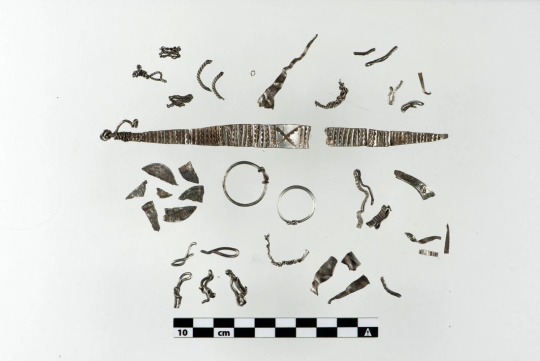


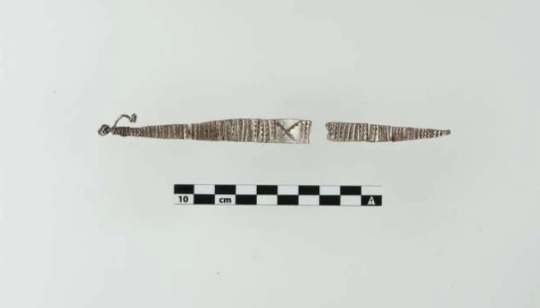


Viking Silver Treasure Hoard Discovered in Norway
46 pieces of silver from the Viking age were recently discovered in a field in mid-Norway. “It’s an exceptional find,” says archaeologist.
“It’s been many years since such a large Viking treasure was found in Norway,” archaeologist Birgit Maixner, from NTNU Vitenskapsmuseet, says in a press release from NTNU.
Save for two intact finger rings, the silver treasure consists of fragments. Arab coins, a braided neck ring, arm rings and necklaces – all of them cut in pieces.
“This find is from a time when pieces of silver would be weighed and used for payment,” Maixner says.
This economic system was used in the transition between bartering with goods to the money economy, the archaeologist explains.
While coins were in use on the Continent from around 550, people in the Nordic region mainly bartered, until the end of the 800s when the weight economy was established.
Most of the pieces weigh less than one gram, which suggests that they have been used repeatedly for payment.
A fine day for a Viking find
And here the treasure lay, until one day in December 2021, when the weather was finally nice, and Pawel Bednarski decided to bring his metal detector out to do a bit of searching around a field.
“The first thing I found was a small ring,” Bednarski says in the press release.
He didn’t think much of the ring. But then he found another one, and a piece of an armring, and so on. Finally he had dug out a pile of silver, hidden beneath no more than 2-7 centimetres of soil.
“It wasn’t until I got home and rinsed the pieces under water that I understood that this was an exciting find,” says Bednarski.
He handed the find over to the municipal archaeologists, who confirmed that this was very interesting indeed, and most likely from the Viking Age.
Carefully cut into pieces
The find includes an almost intact bracelet – cut into eight pieces. Archaeologists believe these types of bracelets were developed in Denmark in the 800s.
The Arabic coins are older than what is usual in a Viking find, four of them have been dated to the end of the 700s and into the 800s.
These features are more common for treasure finds from Denmark than Norway, archaeologist Maixner explains. Based on this she believes the treasure is from around 900 AD.
It’s more common to find fragments of several different items in these sorts of Viking treasures. In this case, however, the find contains several pieces of the same item – such as the carefully cut bracelet.
“We can imagine that the owner had prepared to trade by cutting the silver into appropriately weighted pieces,” Maixner says.
“The fact that this person had access to an entire broadbanded bracelet, which was primarily a Danish item, might suggest that the owner had been to Denmark before travelling to this area in mid-Norway,” Maixner says.
Just over half a cow
Previous finds in the same area, such as equipment used to weigh silver, suggest that trading was taking place here.
And using pieces of silver to pay clearly had its advantages. If you wanted to barter for a cow, you needed to have for instance a number of sheep to make the deal. Carefully weighted pieces of silver was much easier to handle and travel with, and allowed the owner to buy goods whenever it suited.
So what could this Viking have bought with these 46 silver pieces – that weigh 42 grams in total?
Based on information from Gulatingsloven, the Gulating Law, about the price of cows, Maixner calculates that the money would fetch around 0,6 cows.
The value of the treasure was considerable, particularly for an individual, Maixner says, noting that a medium sized farm might have around five cows.
We can only speculate on why the treasure was hidden, not to be found for more than 1.000 years.
Such deposits are sometimes interpreted as offerings to the Gods. Or perhaps a Viking arriving from Denmark hid his treasure to keep it safe, and was somehow prevented from returning to fetch it.
By Ida Irene Bergstrøm.
#Viking Silver Treasure Hoard Discovered in Norway#metal detector#metal detecting finds#treasure#viking treasure#ancient artifacts#archeology#archeolgst#history#history news#ancient history#ancient culture#ancient civilizations#viking history
148 notes
·
View notes
Text

Boeing is using Fortnite game technology to update the B-52s
Will this "hyper-realistic" modeling tool help give the program a Victory Royale?
Fernando Valduga By Fernando Valduga 23/09/2023 - 12:27 in Military
A popular Fortnite game engine is helping Boeing modernize 60-year-old B-52 bombers for another three decades of service.
To see how the new Rolls-Royce F-130 engines would work in the U.S. Air Force's B-52 Stratofortresses, the plane's manufacturer resorted to Unreal Engine 5, the software that powers the Fortnite shooting game. The 3D environment of the game engine allows pilots and maintainers to virtually interact with an updated digital representation of the B-52, such as starting and turning off an engine.
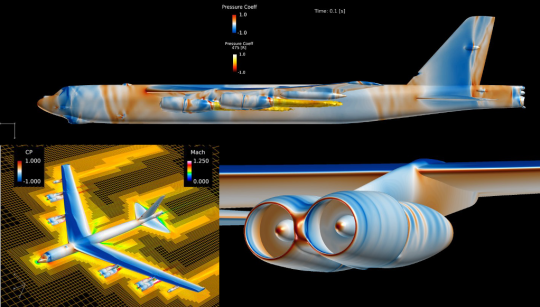
It is a "powerful and really impressive tool," said Jennifer Wong, senior director of bombers at Boeing.
Wong said that commercial digital software, such as the "hyper-realism features" of Unreal Engine 5, reduces costs and delivery time.
“We learn faster and are able to adjust faster when we talk about models than [when] we learn after bending metal,” she told reporters last week at the annual Air, Space & Cyber Conference event of the Air and Space Forces Association.

The virtual environment gives USAF “unprecedented access” to modifications from the beginning and gives feedback to Boeing long before they start upgrading the aircraft, Wong said.
This is part of a modernization effort called the Commercial Engine Replacement Program, or CERP, which will replace the eight Pratt & Whitney TF33 engines in each jet to keep the bomber flying.
The program is much larger than just the engine replacement, Wong said, as Boeing will also update the aircraft's displays, cockpits and other avionics systems.
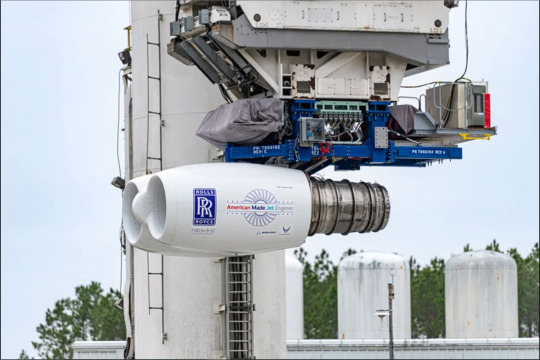
Rolls-Royce is on track to complete the initial engine tests by the end of the year and begin the "critical project review" in the first quarter of 2024.
Boeing will also replace the current B-52 radars with Raytheon's active electronic scanning radar, called AESA. The radar is already used in the U.S. Navy's F/A-18E/F Super Hornets jets.
"When we say things like 'the B-52 will have capabilities similar to those of fighters in the future', that's what we mean. Eventually, the B-52 will be able to have some notion of capacity similar to that of a fighter and a little of that visualization that is currently on the F-18 platform," Wong said.

The new radar will allow the B-52 to track multiple targets simultaneously, Wong said. Other updates to the radar program include a new broadband radome, which protects the radar antenna, large digital touchscreen displays for browsers and manual controllers.
"This will allow us to continue to improve resources in the future, because the advance will be made through software, rather than hardware changes in the future," Wong said.
Raytheon recently announced that it has delivered the first AESA radar to Boeing for the program.
These modernization programs are crucial, since the B-52 could fly even beyond the 2050s, according to Colonel Scott Foreman, leader of the Air Force's B-52 program. Foreman pointed to the A-10 Warthog, almost half a century old, as an example of an airplane that is still flying after several attempts by the U.S. Air Force to retire it.

“Even if we're saying 2050, I have no reason to believe that he can't fly for a long time after that,” Foreman said at the AFA conference.
Boeing said it will have all the B-52s modified with the new radar by the end of fiscal year 2031 and the engine replacement program completed by the end of fiscal year 2036.
Source: DefenseOne
Tags: Military AviationBoeing B-52H StratofortressCERPUSAF - United States Air Force / U.S. Air Force
Sharing
tweet
Fernando Valduga
Fernando Valduga
Aviation photographer and pilot since 1992, he has participated in several events and air operations, such as Cruzex, AirVenture, Daytona Airshow and FIDAE. He has work published in specialized aviation magazines in Brazil and abroad. Uses Canon equipment during his photographic work throughout the world of aviation.
Related news
AIR SHOWS
IMAGES: How was Air Sunday at the Air Force Academy
23/09/2023 - 11:52
A U.S. Air Force F-35A Lightning II aircraft designated for the 158ª Fighter Wing, Vermont National Guard, taxis at Spangdahlem Air Base, Germany, on June 9, 2023, in preparation for Air Defender 23. (Photo: U.S. Air Force / Tech Sgt. Anthony Plyler)
MILITARY
About half of the US F-35 fighters are not ready to fly
09/22/2023 - 9:30 PM
MILITARY
Modernized A-50U AWACS aircraft is delivered to the Russian Air Force
09/22/2023 - 16:00
The U.S. Army announced the delivery of the first two AH-64E Version 6 Apache Guardian attack helicopters, but only provided photos of the two previous AH-64D they replaced, being prepared for a flight back to the United States. (Photo: U.S. Army)
HELICOPTERS
U.S. Army Aviation Unit in Europe receives new Apache helicopters
22/09/2023 - 14:00
MILITARY
Germany acquires 13 state-of-the-art LUNA drones and new radar for Eurofighters
09/22/2023 - 11:00
MILITARY
VIDEOS AND IMAGES: F-35A fighters operate from a highway for the first time
22/09/2023 - 09:00
Client PortalClient PortalClient PortalClient PortalClient PortalClient PortalClient PortalClient PortalhomeMain PageEditorialsINFORMATIONeventsCooperateSpecialitiesadvertiseabout
Cavok Brazil - Digital Tchê Web Creation
Commercial
Executive
Helicopters
HISTORY
Military
Brazilian Air Force
Space
Specialities
Cavok Brazil - Digital Tchê Web Creation
17 notes
·
View notes
Text
Starlink Satellites via astronycsc
Starlink refers to a satellite internet constellation project developed by SpaceX, the private aerospace manufacturer and space transportation company founded by Elon Musk. The goal of the Starlink project is to provide high-speed, low-latency broadband internet service to underserved and remote areas around the world.
Starlink, as a satellite internet constellation, has raised concerns about its potential to cause visible optical interference or "satellite trails" in the night sky. This interference occurs when sunlight reflects off the satellites, making them visible as bright points of light moving across the sky.
The individual satellites in the Starlink constellation are equipped with solar panels and reflective surfaces, which can catch and reflect sunlight when they are in the dark part of the Earth but are still illuminated by the Sun. This can result in visible trails of light moving across the night sky.

Astronomers and astrophotographers have expressed concerns about the impact of these satellite trails on astronomical observations. The bright streaks created by the reflections can interfere with observations of celestial objects and may be particularly disruptive for long-exposure astrophotography.
SpaceX, the company behind Starlink, has acknowledged these concerns and has been actively working on mitigating the impact of satellite reflections on astronomical observations. They have been testing various solutions, including adjustments to the satellites' orientation, changes in the satellite design, and coatings to reduce reflectivity.
One attempt to address this issue involved the launch of a prototype satellite called "DarkSat" or "VisorSat." This satellite had experimental coatings to reduce its reflectivity and make it less visible from the Earth. However, the effectiveness of such measures is still under evaluation.
#starlink#spacex#elon musk#satellite trails#interference#astrophysics#physics#visible optical interference#darksat#visorsat
5 notes
·
View notes
Text

How will EarthCARE mission shed light on clouds?
In around six months, ESA's Earth Cloud Aerosol and Radiation Explorer mission will take to the skies to advance our understanding of the interactions between clouds, aerosols and radiation in Earth's atmosphere. But how will it do that exactly?
Clouds remain one of the biggest uncertainties in how the atmosphere drives the climate system. A better understanding of the relationship between clouds, aerosols and radiation is a high priority in both climate research and weather prediction.
For example, what happens to infrared radiation when emitted from Earth's surface and trapped by clouds? What role do aerosols play in reflecting solar radiation back to space? And how do these processes affect climate and weather?
The Earth Cloud Aerosol and Radiation Explorer (EarthCARE) mission will provide novel observations to answer some of these critical scientific questions. EarthCARE is equipped with four state-of-the-art instruments, each designed to provide unique insights into the complex interactions between clouds, aerosols and radiation.
Atmospheric lidar
The atmospheric lidar is an advanced lidar (light detection and ranging) system designed to measure the vertical profile of aerosols and clouds in Earth's atmosphere along the EarthCARE track. By emitting light pulses and analyzing the reflected signals, this unique lidar can precisely provide the distribution and properties of aerosols and clouds, including their altitude, thickness and detailed optical properties and aerosol type. This information is crucial for improving climate models and understanding the role of aerosols and clouds in Earth's energy balance.
Cloud profiling radar
Provided by the Japanese Space Agency (JAXA), the cloud profiling radar is a key instrument that enables EarthCARE to observe the internal structure of clouds. Operating in the millimeter-wavelength range, the cloud profiling radar penetrates through clouds and light precipitation—providing detailed insights into their vertical structure and velocity, particle size distribution and water content. This radar is essential for studying cloud processes, such as the formation and dissipation of clouds, and contributes valuable data for improving weather and climate models.
Multispectral imager
Whereas the lidar and radar will provide profiles of the atmosphere in a rather thin curtain, directly underneath the satellite, EarthCARE's multispectral imager provides a much wide field of view to give context to the profile measurements.
The multispectral imager captures high-resolution images in multiple spectral bands in the visible and infrared spectrum, which will allow scientists to differentiate between various types of clouds, aerosols and Earth's surface.
The imager provides additional information about the optical properties of clouds and aerosols, aiding in the characterization of their composition and distribution. In addition, it will allow the generation of a three-dimensional cloud and aerosol field using the atmospheric lidar and cloud profiling radar data. These data are crucial for understanding the radiative impact of clouds and aerosols on Earth's climate system.
Broadband radiometer
The broadband radiometer plays a crucial role in EarthCARE's mission by measuring the radiative fluxes at the top of Earth's atmosphere. As the satellite travels along its orbit, the radiometer views the atmosphere from three directions, allowing it to accurately quantify the amount of reflected solar radiation and the outgoing thermal radiation emitted by Earth.
This is known as the planet's energy balance. Comparing this to the radiation calculated from the combined observations of the other instruments will help scientists improve our current understanding of the aerosol-cloud-radiation interaction.
Together, these four instruments form a powerful suite of tools that provide unprecedented observations of Earth's atmosphere. The data generated by EarthCARE's instruments contribute significantly to advancing our knowledge of climate processes and will unravel the intricate interactions between clouds, aerosols and radiation in Earth's atmosphere.
Largest and most complex Earth Explorer mission
EarthCARE is the largest and most complex Earth Explorer, developed within ESA's Earth Observation FutureEO program. The mission comes at a critical time in the development of kilometer-scale resolution, global climate models and will provide an important contribution to an improved understanding of cloud convection and its role in Earth's radiation budget.
EarthCARE is an ESA mission, but it has been developed as a cooperation between ESA and JAXA, the Japanese Space Agency.
As the international science community eagerly awaits the valuable data from the EarthCARE satellite, researchers and experts from the field gathered at ESA's Center for Earth Observation in Frascati, Italy, to present and discuss EarthCARE science topics and validation of the mission data.
As EarthCARE's launch approaches, the growing excitement is being felt across the community. The central role of the mission in ensuring long-term, climate-relevant datasets, in synergy with past and future missions, was also clearly identified.
IMAGE....EarthCARE is the largest and most complex Earth Explorer, developed within ESA’s Earth Observation FutureEO program. The mission comes at a critical time and will provide an important contribution to an improved understanding of cloud convection and its role in Earth’s radiation budget. EarthCARE is equipped with four state-of-the-art instruments, each designed to provide unique insights into the complex interactions between clouds, aerosols and radiation. Credit: ESA/ATG medialab
2 notes
·
View notes
Text

Matt Wuerker
* * * *
LETTERS FROM AN AMERICAN
November 2, 2023
HEATHER COX RICHARDSON
NOV 3, 2023
In a speech yesterday in Northfield, Minnesota, President Joe Biden explained his economic vision to rural Americans. “Over the past 40 years or so, we’ve had a practice in America—an economic practice called trickle-down economics, and it hit rural America especially hard,” he said. “It hollowed out Main Street, telling farmers the only path to success was to get big or get out.”
At the same time, he said, “[t]ax cuts for big corporations encouraged companies to grow bigger and bigger, move jobs and production overseas for cheaper labor, and undercut local small businesses. Meat-producing companies and the retail grocery chains consolidated, leaving farmers [and] ranchers with few choices about where to sell their products, reducing their bargaining power. Corporations that sell seed, fertilizer, and even farm equipment used their outsized market power to change farmers and charge them and ranchers unfair prices.”
Biden noted that the U.S. has lost more than 400,000 family farms in the past 40 years, an area of more than 140 million acres of farmland, equivalent to an area the size of Minnesota, North Dakota, and South Dakota combined. Family farms have failed, and as they did so, small businesses, hospitals, schools, and communities also suffered.
Young people feel they have no choice but to leave home “in search of good-paying jobs and a chance at the American Dream.”
Biden explained that his plan to invest in America would create new and better markets and new income streams to help rural areas thrive. He noted that $20 billion of the Inflation Reduction Act will go to helping farmers and ranchers adjust to climate change by changing cover crops and managing nutrients and grazing, while urging farmers to diversify from single crops and sell in local markets.
Biden emphasized that the administration is promoting competition in agricultural markets, noting that currently just four big corporations control more than half the market in beef, pork, and poultry. If just one of their processing plants goes offline, it can cause massive supply chain disruptions (as the closing of a baby formula plant did in 2022). “[T]here’s something wrong,” he said, “when just 7% of the American farms get nearly 90% of the farm income.”
In addition to the existing national investments in power grids and broadband that will help rural communities, Biden announced $1 billion to fix aging rural infrastructure systems like electricity, water, and waste water systems that haven’t been updated in decades; $2 billion to help farmers fight climate change; $145 million for clean energy technologies like solar panels that will help lower electric bills; and $274 million for rural high-speed internet expansion.
The administration’s vision for rural America appears to be part of a larger vision for restoring competition to the U.S. economy and thus is closely tied to the administration’s push to break up monopolies. In July 2021, Biden promised to interpret antitrust laws in the way they had been understood traditionally, not as the U.S. government began to interpret them in the 1980s. Then, following the argument advanced by the solicitor general of the United States at the time, Robert Bork, the government concluded that economic consolidation was fine so long as it promoted economic efficiencies that, at least in the short term, cut costs for consumers.
Biden vowed to return to the traditional understanding of antitrust principles championed by presidents all the way back to Theodore Roosevelt at the turn of the last century, arguing that protecting economic competition protects workers, promotes innovation, and keeps consumer prices down. To that, the coronavirus pandemic added an awareness of the need to protect supply chains.
“Bidenomics is just another way of saying ‘the American Dream,’” Biden said. “Forty years ago, trickle-down economics limited the dream to those at the top. But I believe every American willing to work hard should be able to get a job, no matter where they live—in the heartland, in small towns—to raise their kids on a good paycheck and keep their roots where they grew up.”
In contrast to Biden’s outreach to farmers, House speaker Mike Johnson (R-LA) is facing a dilemma over the nation’s next farm bill, which must be passed by the end of the year. According to Clark Merrefield of The Journalist’s Resource, Congress usually debates and renews the farm bill every five years, and the last one passed in 2018.
Farm bills include price support for farm products, especially corn, soybeans, wheat, cotton, rice, peanuts, dairy, and sugar. It also includes crop insurance, conservation programs, and a wide variety of other agricultural programs, making the farm bill hugely popular in rural areas that focus on farming.
Also included in the measure are nutritional programs for low-income Americans, such as the Supplemental Nutrition Assistance Program (SNAP), formerly known as food stamps. SNAP serves 41 million low-income Americans, but as a member of the far-right Republican Study Committee, Johnson called for cutting SNAP benefits. Now his far-right colleagues are echoing his position, saying that the need to renew the farm bill is a great opportunity to make significant cuts to SNAP, especially since the farm bill is expected to bear a price tag of more than $1 trillion for the first time in our history.
“I can’t imagine the Mike Johnson that we know would pass up the opportunity to secure as many conservative wins as possible in this farm bill,” a Republican aide told Meredith Lee Hill of Politico, “[a]nd that means serious SNAP reforms.”
But even some Republicans—primarily those who hail from agricultural states—object to loading the farm bill up with the poison pill of SNAP cuts, knowing such a tactic would repel Democrats, whose votes will be necessary to pass the measure as far-right Republicans balk.
It will take a deft hand to get the measure through Congress, and its failure at Johnson’s hands will infuriate hard-hit rural areas. It is one more thing to add to the new speaker’s to-do list, as the deadline for funding the government is looming. The continuing resolution funding the government at 2023 levels, the measure that cost Representative Kevin McCarthy (R-CA) his speakership, expires in just over two weeks, on November 17.
Johnson’s willingness to load bills with poison pills that his conference likes showed today in the House’s passage of Republicans’ aid bill for Israel—Ukraine aid had been cut away—along with dramatic cuts to funding the Internal Revenue Service (IRS), a provision that the nonpartisan Congressional Budget Office warned would add to the deficit rather than reducing it. Knowing that the measure will not pass the Senate, a number of Democrats voted for it, likely to avoid attacks from conservative opponents.
Senate majority leader Chuck Schumer (D-NY) says the Senate won’t even take up the House bill. Instead, the Senate continues to work on its own strongly bipartisan bill that ties together aid to Israel and Ukraine.
As Kate Riga of Talking Points Memo put it, if the Senate continues to work in this bipartisan way, we will continue to see the same pattern we’ve seen throughout this Congress: “Senate Democrats, Senate Republicans and House Democrats all supporting more or less the same thing, with a chunk of House Republicans out on a branch alone.”
After an angry fight last night over Senator Tommy Tuberville’s (R-AL) holds on military promotions, in which Republican senators joined Democrats in confronting him, the Senate today confirmed General David Allvin to be Air Force chief of staff and Admiral Lisa Franchetti as chief of naval operations, by votes of 95 to 1. Franchetti is the first woman to serve on the Joint Chiefs of Staff.
Wednesday’s fight appears to have been prompted by the hospitalization of acting Marines Commandant General Eric Smith after an apparent heart attack. Smith was holding down two high-level positions at once owing to Tuberville’s holds, and he had warned his schedule was “not sustainable.” Although the Pentagon says Tuberville is endangering national security, Tuberville insists that his hold on almost 400 military promotions is not hurting the military.
The new additions mean there are no vacancies on the Joint Chiefs of Staff for the first time since July.
LETTERS FROM AN AMERICAN
HEATHER COX RICHARDSON
#Matt Wuerker#Letters From An American#Heather Cox Richardson#US Economy#Bipartisan#House Republican#National Security#income inequality
4 notes
·
View notes
Text
I.B.1698 MICHAEL [IBM] harrelltut.com of 1968 quadrillionharrell.tech Machine Engineering [ME] AutoCAD [MAC] Robotics in Architectural Memory Equipment w/Symmetric Encryptions of Satellite [RAMESES] Broadband Communication [B.C.] Languages… Scientifically Expanding the Asia [SEA] Pacific Network Info Centre of Internet Number Resources from the Regional Internet Registries [RIRs] @ 1921 QUANTUM 2023 HARRELL 2024 TECH 2025 Apple & IBM [A.i.] LLC of ATLANTIS [L.A.] 5000
WELCOME BACK HOME IMMORTAL [HIM] U.S. MILITARY KING SOLOMON-MICHAEL HARRELL, JR.™

i.b.monk [ibm] mode [i’m] tech [IT] steelecartel.com @ quantum harrell tech llc

eye 1921steelecartel.tech TITAN of SIRIUS [U.S.] gullahgeecheemilitary.tech WEALTH @ quantum harrell tech llc

ibmautocad.tech automation & robotic framework architect @ 1921 QUANTUM 2023 HARRELL 2024 TECH 2025 Apple & IBM [A.i.] LLC of ATLANTIS [L.A.] 5000

ibmautocad.tech engineer @ 1921 QUANTUM 2023 HARRELL 2024 TECH 2025 Apple & IBM [A.i.] LLC of ATLANTIS [L.A.] 5000

iMac 1968 Patents [I/P] @ 1921 QUANTUM 2023 HARRELL 2024 TECH 2025 Apple & IBM [A.i.] LLC of ATLANTIS [L.A.] 5000
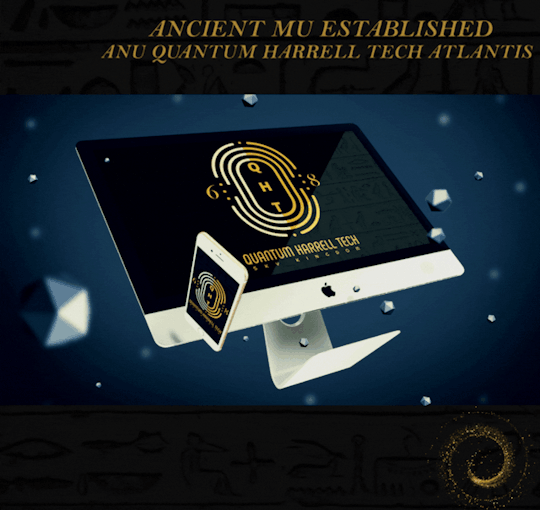
Quantum intelligent [Qi] CAD systems II @ 1921 QUANTUM 2023 HARRELL 2024 TECH 2025 Apple & IBM [A.i.] LLC of ATLANTIS [L.A.] 5000

Quantum Autodesk @ 1921 QUANTUM 2023 HARRELL 2024 TECH 2025 Apple & IBM [A.i.] LLC of ATLANTIS [L.A.] 5000

Quantum intelligent [Qi] Automation & Computer Engineering [ACE] @ 1921 QUANTUM 2023 HARRELL 2024 TECH 2025 Apple & IBM [A.i.] LLC of ATLANTIS [L.A.] 5000
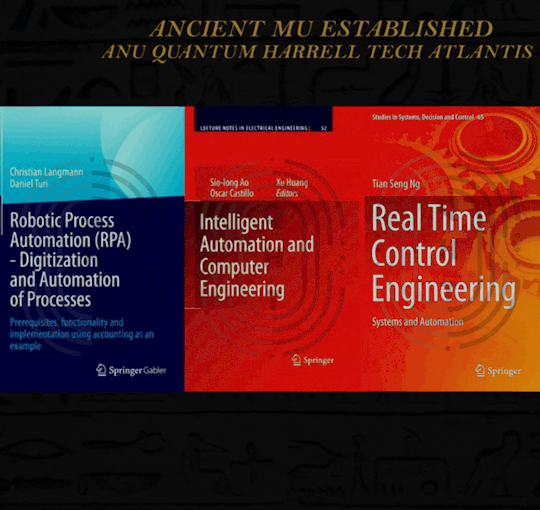
Quantum internet [Qi] Security WEALTH @ 1921 QUANTUM 2023 HARRELL 2024 TECH 2025 Apple & IBM [A.i.] LLC of ATLANTIS [L.A.] 5000

Private quintillionharrell.tech BANKING of anugoldenblackwallstreet.com WEALTH MANAGEMENT REALITY @ 1921 QUANTUM 2023 HARRELL 2024 TECH 2025 Apple & IBM [A.i.] LLC of ATLANTIS [L.A.] 5000

private quadrillionharrell.tech banking & extreme quintillion.tech wealth management @ 1921 QUANTUM 2023 HARRELL 2024 TECH 2025 Apple & IBM [A.i.] LLC of ATLANTIS [L.A.] 5000
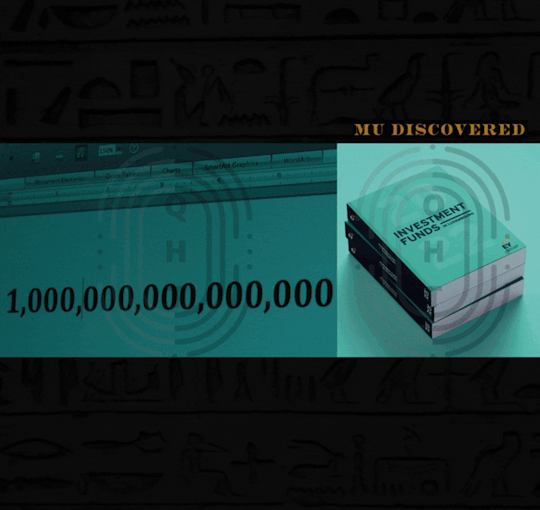
how many quantumharrell.tech yachts can you afford???

quintillionharrell.tech eye always @ the top

© 1698-2223 QUANTUM HARRELL TECH LLC All [L.A.] SKY ILLUMINATI Business [I.B.] DotCom [iDC] Domain [I.D.] Rights Reserved.
#quadrillionharrell.tech#harrelltut.com#quintillionharrell.tech#u.s. michael harrell#quantumharrelltech#king tut#o michael#mu:13#quantumharrelltut#kemet#om#1698qhtesla.com#1698#1968#gen x better than you
3 notes
·
View notes
Photo

👉💠The Andromeda #Galaxy (also known as the Andromeda #Nebula, Messier 31, and NGC 224) is a spiral-barred galaxy located at a distance of 2.5 million light-years in the constellation of Andromeda. It was first recorded in 964 by Abd-al-Rahman Al-Sufi, a Persian astronomer. On the 15th of December 1612, Simon Marius made the first telescope observations. This is the nearest large galaxy to the #MilkyWay and has a diameter of 152,000 light-years. This makes the latter the largest member of the Local Group in terms of size. It is expected to collide with the Milky Way over the next four-five billion years. The two galaxies will merge, forming a giant elliptical or lenticular galaxy. A few days ago, a group of amateur #astronomers made the #Andromeda galaxy a hot topic again. Their discovery was announced on the 9th of January, 2023, concerning an arc-like structure near the Andromeda Galaxy. The object is known as Strottner-Drechsler-Sainty Object 1 (SDSO-1) after the names of the observers Marcel Drechsler, Xavier Strottner, Yann Sainty, and Bray Falls. This long filamentary nebulous structure was detected from its emission in doubly ionised oxygen (i.e., [O III]). It has no apparent X-ray, UV, optical (including ionised hydrogen, Hα), radio, or infrared counterparts. Its nature is unknown, and we also do not know if SDSO-1 is associated with the Andromeda Galaxy. Thus, further observations are needed with professional #telescopes and equipment to verify the nature of this object. ©️Image: Composite optical image of the Andromeda galaxy and SDSO-1 taken with an amateur telescope. It was created using narrow-band filters focused on the emission of doubly ionised oxygen ([O III], green) and ionised hydrogen (Hα, red). Additionally, broadband filters (RGB) were used. ©️Image Credit: Yann Sainty & Marcel Drechsler https://www.instagram.com/p/CnwoX1kMs2G/?igshid=NGJjMDIxMWI=
2 notes
·
View notes
Text
BEST IPTV SERVICE FOR NEWS, SPORTS, MOVIES AND SERIES
What is IPTV
Internet Protocol television (IPTV) is the delivery of television content over Internet Protocol (IP) networks. This is in contrast to delivery through traditional terrestrial, satellite, and cable television formats. Unlike downloaded media, IPTV offers the ability to stream the source media continuously. As a result, a client media player can begin playing the content (such as a TV channel) almost immediately. This is known as streaming media.
Is crystallyIPTV cheaper than cable?
Providing IPTV is less expensive for the Pay TV provider because there is less equipment in the headend required to deliver the video signal. Also, you may not need to provide a set-top box, since IPTV services can often be accessed over a streaming device like a Roku, Google Chromecast, or Amazon Fire TV Stick.
What are the benefits of using IPTV?
IPTV can be used with any IP based service such as VOIP and high speed internet. Both live and pre-recorded videos and audios can be played over IPTV. also, IPTV uses your current computer network and there is no need for cables.
What channels can I get with crystallyIPTV?
Some of the most popular verified IPTV apps include Netflix, Disney+, Amazon Prime Video, Hulu, HBO Max, Hotstar, and more. Very often, you can also come across unregistered services when using crystallyIPTV.
Does crystallyIPTV include Netflix?
crystallyIPTV services include: Netflix, Disney+, Hulu, HBO Max, and Peacock TV. Start your IPTV
What do you need for crystallyIPTV to work?
To use crystallyIPTV service, you need a broadband internet connection and a device to view IPTV content on, e.g., a desktop PC, laptop, smartphone, or Smart TV device. Do I need to get a new TV, or is an older one OK? You can easily get IPTV on older TV models, too, but you will need a set-top box.
#iptv premium#best iptv#iptv provider#iptv subscription#adult iptv#iptv in usa#iptv smarters#iptv 2022#iptv service#iptv player
3 notes
·
View notes
Text
Computer Lab Needed to Assist Children's Learning | Advanced Academy
The Best School in Indore has two air-conditioned computer labs with high-speed broadband connectivity and audio-visual equipment. The operating system and configuration required to assist children's learning and efficient curriculum delivery are installed on each computer. Every student has a desktop in the computer labs.
#Computer lab#a best computer lab for your kid#CBSE education#the best education#top schools in indore#cbse boarding schools in india#best cbse school in india#best schools in indore
4 notes
·
View notes
Text
Let's find Centurylink deals and services available in your area

In a typical home, many of the newest devices and services now require high-speed internet access. Home automation, virtual reality, the internet of things, high-definition TV and more, all require a high-speed connection. The fastest internet service providers in the industry are CenturyLink Internet Service, who offer gigabit speeds for homes and businesses.
The Future of Technology: How the Internet is Changing Life and Business
CenturyLink’s Advanced Internet Equipment
CenturyLink, is a leading provider of communications and information services to residential and commercial customers in the United States, offering broadband, voice and video services. CenturyLink offers broadband internet services using its fiber optic and copper network, which serves approximately 2.1 million customer locations via approximately 30,000 miles of fiber optic cable, approximately 12,500 miles of copper wire and approximately 20,000 miles of hybrid fiber coaxial wire. CenturyLink's nationwide network also includes approximately 54,000 miles of microwave radio relay links, 2,000 miles of satellite facilities and 1,000 miles of fixed wireless broadband via satellite. CenturyLink also offers managed and outsourced business communications services, including cloud-based and on-premises voice, data and advanced.
Centurylink Fiber Gigabit + Home Phone
For the past three years, CenturyLink has been working on a fiber optic network that will give their customers access to speeds up to 940 Mbps (megabits per second). This new network will give their customers the ability to stream HD video and download entire HD movies in a matter of minutes. This new network will also eliminate their customers' need for multiple modems and routers as well as be able to handle multiple devices at once such as multiple televisions, computer, and other household appliances.
CenturyLink Home Internet & Phone
Are you tired of your cable company? Are you looking for a better deal on internet and home phone service? CenturyLink has got you covered! With CenturyLink, you can get high-speed internet and unlimited home phone calls for one low price. Plus, there are no contracts – so you can cancel any time without penalty. Check out CenturyLink today and see how much you could save!
CenturyLink Internet Coverage in my aria
CenturyLink is a telecommunications company that provides broadband and internet services. They have an extensive network and can be found in various regions of the world.
Call Centurylink Customer Service numbers and, Get help with your CenturyLink services through resources and tools to resolve your issues.
Related Content:
Call (855) 561-1333 and book your internet connection now!
2 notes
·
View notes
Text
Small Satellite Market - Forecast (2022 - 2027)
The Small Satellite Market size is analyzed to grow at a CAGR of 18.2% during the forecast 2021-2026 to reach $8.2 billion. Small satellites, also termed as Smallsats are a class of flight-proven spacecraft, designed to meet high reliability mission requirements. The increasing popularity of these mini-satellites and nano-satellites is mostly due to their lightweight, versatile and inexpensive designs, integrated with the latest software and hardware improvements, which fuel the growth of the Small Satellite Industry. Hence, the affordable solution has broadened the diverse mission-specific standards across various industry verticals, including, asset tracking, security & defense, IoT, and other space programs. Furthermore, the rise in demands for satellite imagery, low-cost high-speed broadband, along with the investments in fundamental research in CubeSats are some of the factors that drive the growth of the Small Satellite Market.

Small Satellite Market Report Coverage
The report: “Small Satellite Industry Outlook – Forecast (2021-2026)”, by IndustryARC covers an in-depth analysis of the following segments of the Small Satellite Industry.
By Offering: Hardware (Satellite Antennas, Solar Panels, Terminals, Support Equipment and Others), Software and Service.
By Type: Mini-Satellite, Micro-Satellite, Nano-Satellite, Pico-Satellite, Femto-Satellite and Other.
By Industry: Satellite Services, Satellite Manufacturing, Launch Vehicles and Ground Equipment.
By Mission: Constellation Missions, Installation Missions and Replacement Missions.
By Application: IoT/M2M, Communication, Earth Observation & Meteorology, Military & Intelligence, Scientific Research & Exploration, Weather and Other
By Geography: North America (U.S, Canada, Mexico), Europe (Germany, UK, France, Italy, Spain, Russia and Others), APAC(China, Japan India, South Korea, Australia and Others), South America(Brazil, Argentina and others)and RoW (Middle east and Africa).
Key Takeaways
North America is estimated to hold the largest market share of 45.7% in 2020, owing to the eminent requirement for responsive defense forces, massive investments for breakthrough custom-designed satellites, along with rigorous commercial services demand for satellite bandwidth and network solution.
The M2M Satellite Communication technologies are majorly driven by the potential launches of cloud-based solutions is estimated to drive the market.
The promising requirements to seek reliable connectivity between the land and sea operations, along with VSAT connectivity for on-board security, drive the market growth.
Request Sample
Small Satellite Market Segment Analysis – By Type
By Type, the Small Satellite Market is segmented into Mini-Satellite, Micro-Satellite, Nano-Satellite, Pico-Satellite, Femto-Satellite and Other. The Mini-Satellite is estimated to hold the highest share of 33.5% in 2020, owing to the advantageous features, including miniaturized design, travel at high speeds and remote sensing technology. In addition, affordable development solutions of Nano-Satellite technology makes them a suitable option to deliver superior solutions for communications. In February 2021, Fleet Space Technologies, an Australian nanosatellite company is set to launch its fifth nanosatellite, Centauri 3. The Centauri 3 is Fleet Space’s fifth and most advanced Commercial Nanosatellite, designed to power up a global network of connected devices deployed worldwide. Increasingly, these miniaturized spacecraft provide lucrative opportunities to most business enterprises to accelerate the growth of the Small Satellite Market.
Small Satellite Market Segment Analysis – By Application
By Application, Small Satellite Market is segmented into IoT/M2M, Communication, Earth Observation & Meteorology, Military & Intelligence, Scientific Research & Exploration, Weather and other. The communication segment held the major share of 22.2% in 2020 in the Small Satellite Market, due to the successful introduction of game-changing software for the satellite communication industry along with new business opportunities to expand remote location operation and real-time asset monitoring. In March 2020, a leading provider of next generation content connectivity solutions, NOVELSAT announced a comprehensive solution for mission critical satellite communications. The solution by Novelsat is designed to deliver highest levels of transmission security, resilience and robustness, with a comprehensive wide-ranging security suit, including, transmission security (TRANSEC), communication security (COMSEC), low probability of detection (LPD) and low probability of interception (LPI). Therefore, the growing demand for optimum levels of security and protection for business operations and other mission critical communications of across defense, security and government is estimated to drive the Small Satellite Market.
Inquiry Before Buying
Small Satellite Market Segment Analysis – By Geography
North America is estimated to hold the largest market share of 45.7% in 2020, along with Europe, owing to the eminent requirement for responsive defense forces, massive investments for breakthrough custom-designed satellites, along with rigorous commercial services demand for satellite bandwidth and network solution. The industry is poised to continue its rapid growth as SpaceX and others put up constellations of thousands of satellites intended to serve areas without access to broadband. In order to deliver beta testers download speeds, and robust internet coverage from space, worldwide, in May 2019, Elon Musk's SpaceX launched another 60 Starlink internet satellites into Earth’s orbit. The proposal of SpaceX's satellite internet was initiated in 2018, with the successful launch of the two Starlink test craft, known as TinTinA and TinTinB, designed to transfer huge amounts of information rapidly in comparison to fiber-optic cable. Thus, the Small Satellite industry is poised to grow as large scale space organizations are offering “space as a service” to enable business enterprises with accessibility to data, specific to business requirements. Simultaneously, the market of Small Satellite is witnessing potential growth in Asia Pacific region, owing to the digitalization across industries and vast majority of demonstrative space debris clearance service. In March 2021, Astroscale, a Japan-UK based company launched a mission aimed at removal of debris from Earth's orbit. With Elsa-d, a small satellite under the "End-of-Life Services" offerings by Astroscale, the mission was developed for a space debris removal system. Therefore, the significant intended areas to serve by the lower-cost satellite technologies and surging demand for Earth observation satellites in these regions are estimated to drive the Small Satellite Market.
Small Satellite Market Drivers
Popularity of M2M Satellite Communication
The M2M Satellite Communication technologies are majorly driven by the potential launches of cloud-based solutions, and growing demand from various end-users to expand their business reach globally, are estimated to drive the Small Satellite Market. In addition, rugged, superior and cost-effective Satellite Terminals and telematics devices are becoming a part of the present-day comprehensive fleet management solution, which also boost the market growth. In December 2020, the leading GPS Tracking Systems provider, Rewire Security launched GPS & Telematics software for fleets. The latest software by Rewire enables enterprise owners to generate the location of vehicles in real-time, monitor fleet driver behaviour, observe driver route history and other GPS & Telematics software features. Based on the increasing needs of visibility across the transportation sectors, in October 2020, ORBCOMM, a global provider of Internet of Things (IoT) solutions, launched ST 2100, a state-of-the-art satellite communications device that enables solution providers for seamless Satellite connectivity to IOT applications, and also several other targeted verticals, such as fleet management and utility. Thus, the latest versatile Communication device launches and power-efficient platforms, such as Satellite Antenna for maximum reliability and security drive the growth of the Small Satellite Market.
Schedule a Call
Potential demand for Maritime Satellite Communication solution
The promising requirements to seek enhanced and reliable connectivity between the land and sea operations, along with VSAT connectivity for on-board security and surveillance of shipping industry influence the demand of Maritime Satellite Communication platforms, thereby drive the growth of the Small Satellite Market. The technology innovations across maritime sectors are expanding due to the introduction of gyro-stabilized ground terminals, Minisatellite platforms and multi-frequency dish antennas to reduce the time lag during data transfer. In April 2019, a major international provider of telecommunications, enterprise and consumer technology solutions for the Mobile Internet, ZTE, announced the collaboration with Zhejiang Branch of China Mobile to launch “Heweitong”, a marine broadband satellite solution. The Heweitong offers seamless extension of the mobile network to the ocean, and mitigate other issues, such as high cost, poor coverage and slow data rate. Therefore, the growing emergence of new marine communication with ubiquitous connection for exceptional service is estimated to drive the Small Satellite Market.
Small Satellite Market Challenges
Compatible Issue
The Small Satellites are designed to deliver advantageous services and indubitably, there are several successful launches around the globe and other possible space missions that eventually supported the mass production of platforms such as the CubeSat for upgraded communications role. However, small satellites are not compatible with every kind of operation due to being launched in lower orbits and also, tend to have a shorter lifespan. The design lasts for a year as it gets orbital decay due to the other orbital elements in space. Moreover, the available space is very limited, which is a major concern along with other mentioned design flaws, which hinder the growth of the Small Satellite Market.
Buy Now
Small Satellite Market Landscape
Partnerships and acquisitions along with product launches are the key strategies adopted by the players in the Small Satellite Market. The Small Satellite top 10 companies include Airbus SE, BAE Systems plc, Dauria Aerospace, L3Harris Technologies, Inc., Lockheed Martin, Magellan Aerospace, Maxar Technologies Inc., Northrop Grumman, ORBCOMM Inc., Rocket Lab, Park Aerospace Corp., Sierra Nevada Corporation, Aerospace Corporation, Space Flight Laboratory and many more.
Acquisitions/Technology Launches/Partnerships
In April 2021, the Norwegian Space Agency announced the successful launch of the NorSat-3 maritime tracking microsatellite built by Space Flight Laboratory (SFL), a premier microspace organization and provider of low-cost microsatellites and nanosatellites, in Toronto. The NorSat-3 maritime tracking is designed for space-based maritime traffic monitoring.
In April 2020, the Defense Advanced Research Projects Agency, DARPA awarded Lockheed Martin a $5.8 million contract for the Blackjack program, a satellite integration operation. The Blackjack is a project of DARPA to deploy a constellation of 20 satellites in low Earth orbit by the year 2022 to generate global high-speed communications.
In March 2020, Rocket Lab, a private American aerospace manufacturer and small satellite launch service provider signed an agreement to acquire Sinclair Interplanetary, a Toronto-based satellite hardware company. The acquisition is developed to deliver reliable and flexible satellite and launch solutions.
For more Aerospace and Defense Market reports, please click here
#Small Satellite Market price#Small Satellite Market#Micro-Satellite#Small Satellite Market size#Femto-Satellite#Small Satellite industry#Small Satellite Market share#Small Satellite Market report#Small Satellite industry outlook
2 notes
·
View notes